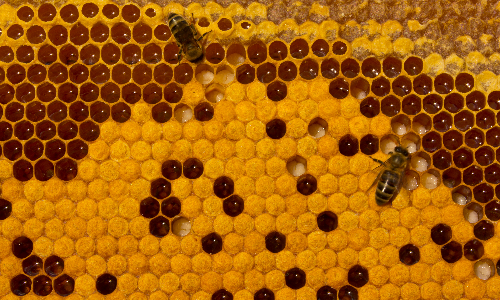Deadly and Diverse: Explore the new microbial discoveries published this month
Posted on July 5, 2023 by Clare Baker
Each month the Microbiology Society publishes the International Journal of Systematic and Evolutionary Microbiology, which details newly discovered species of bacteria, fungi and protists. Here are some of the new species that have been discovered and the places they've been found.
Welcome back to New to Science! Those who are familiar with this blog series will know that it is not uncommon for one study to uncover two or even three new species of microbe, and this week we are starting off with the discovery of a whopping 10 new species of Shewanella. These ten new species were discovered in a mangrove wetland in Zhangzhou, China and join 82 other validly published species in the genus.
Moving on from 92 species in a genus to over 200 in a family; Grimontia kaedaensis is a novel bacteria isolated from the estuary of the Kaeda River in the Miyazaki prefecture in Japan. It joins the Vibrionaceae family which are primarily found in the marine environment but are known to have been found in freshwater. This family includes deadly human pathogens which are responsible for millions of cases and thousands of deaths per year, particularly in areas where drinking water has been polluted by seawater or human faeces.
We’ve talked about human diseases, so how about potato diseases? Streptomyces hilarionis and Streptomyces hayashii are our next two novel bacteria that have been isolated from scab lesions on potato tubers grown in the southern Brazilian states of Rio Grande do Sul and Santa Catarina. They represent two new Streptomyces species related to potato scab. Potato scab is caused by different species of Streptomyces and is characterised by lesions on the tuber surface. It is recurrent across Brazilian potato-producing regions and, while it does not make the potato inedible, it does decease the potato’s commercial value.
Enough about potato scabs and onto something a bit cuter. A novel bacterium has been isolated from a domestic goat in Nakhon Pathom province, Thailand. Researchers were studying anaerobic bacteria in the ruminal fluid of a domestic goat when they isolated Selenomonas caprae. Our novel bacterium adds another location to the list of places where Selenomonas bacteria have been found, which includes the human mouth, wastewater, a brewery and a pig intestine.
For our next microbe, we look to some Danish ducks - Muscovy ducks to be exact. While researchers were screening for Pasteurella multocida, a new species of bacteria was discovered. Interestingly, the new species, Mannheimia cairinae was found in two unrelated flocks. This new discovery has also necessitated the reclassification of another species in the Mannheimia genus. Researchers have proposed that Mannheimia ovis is reclassified as a later heterotypic synonym (a term microbiologists use to refer to a name derived from different specimens) of Mannheimia pernigra, since M. ovis and M. pernigra are closely genetically related, and M. pernigra was validly published before M. ovis.

And finally, we are finishing with a recurring fan favourite of New to Science, Apis melifera or the western honey bee. Bombella pluederhausensis, Bombella pollinis, Bombella saccharophila and Bombella dulcis are four novel Bombella species that are new to science. They came from various biological samples from different niches of the western honey bee, including food and brood combs and dead bees. If you thought that we had got through a whole edition of new to science without explaining name origins, think again! B. dulcis and B. saccharophila get their name from ‘sweet’ and ‘sugar loving’ respectively, but B.pluederhausensis owes its name to the municipality Plüderhausen in southern Germany, where the strain was isolated.

